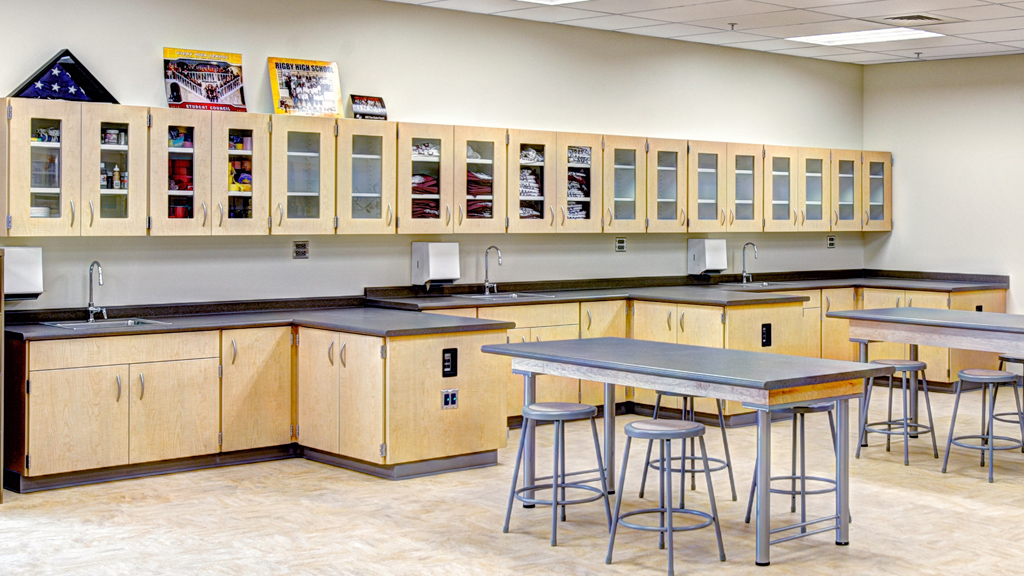Safety Blog
Science Instructional Space Safety During Summer Recess
By Ken Roy
Posted on 2023-06-23

Disclaimer: The views expressed in this blog post are those of the author(s) and do not necessarily reflect the official position of the National Science Teaching Association (NSTA).
The school summer recess is an opportune time to conduct housekeeping activities in your instructional space (laboratory/classroom) and storage areas (storeroom, preparation room). With the beginning of the school year approaching, one very important focus needs to be on reviewing and updating your chemical inventory and ensuring everything is in order. The following is a checklist to help you make your science/STEM instructional space and storage areas safer for your staff and students.
- All instructional space and storage areas must be neat and clean. Aisles must be clutter-free, and the materials neatly organized on the shelves. Nothing is allowed to dangle off the sides of the shelves, especially cords or loose ends that may allow the materials to be pulled off the shelf and become projectiles or tripping hazards. Floors should not be used to store equipment or chemicals.
○ Equipment should not be stored on top of shelving units or at a height that requires a ladder to remove the material.
○ Make sure any storage is no closer than 18 inches from the ceiling.
- If you have sinks in your storage area, flush the lines and ensure the drains are clear to remove any water. Then make sure there is water in the drain to prevent hydrogen sulfide or other gases from diffusing into the workspace from the plumbing system.
- All engineering controls in the instructional space and storage area must be inspected to make sure they are operational as designed. Engineering controls like an eyewash station and safety shower still must be flushed every week over the summer. These controls are meant to protect anyone in an instructional space and storage area and must be in working order anytime a material is stored there.
- Check the ventilation in the chemical storage area and ensure the appropriate venting occurs: continuous flow and non-recirculating. The inspector must log this information in writing.
- Put any maintenance requests in writing, preferably electronically, to the appropriate person(s). Keep copies of all work order requests and follow up to make sure they have been completed.
- Make sure the Heating, Ventilation, and Air Conditioning (HVAC) is in working order.
○ In some cases, schools turn off their air conditioning over the summer. It is crucial that the air temperature is set to an appropriate level in the chemical storage areas and that they are maintained over the summer. See your Safety Data Sheets (SDSs) for acceptable temperature ranges.
○ Make sure filters are changed periodically (about four times a year), and use minimum efficiency reporting value (MERV)-13 if equipment can accommodate it.
- Inspect the fume hood and/or spray booth, making sure it is empty and the exhaust works appropriately.
- All chemicals must be appropriately stored. Chemicals should not be stacked on top of one another, and each chemical must be labeled properly, including with purchase dates. Chemicals must be arranged by their chemical families to resist reacting while in storage.
○ The appropriate chemical cabinets must be in working order for acids, bases, corrosives, and flammables.
○ Chemical storage cabinets must be clear to open and in good working condition.
- The chemicals must be in good working order.
○ If precipitates, crystals, or other potential reactants form on the outside of the bottle, remove the chemical and adequately dispose of it. Use caution when dealing with peroxides. Crystal formation could potentially cause an explosion. If crystals appear, do not touch or remove the container. Contact your local fire marshal and have the fire department on-site to evaluate and remove the bottle. Always check the SDS disposal instructions for each chemical before removing them.
- Make sure your chemical spill equipment is in good working order.
- The appropriate PPE (Personal Protective Equipment, such as indirectly vented chemical splash goggles, nitrile gloves, non-latex apron, and face shield), must be available for anyone in the instructional space and storage area.
○ The PPE must be available to anyone entering the summer storage area.
○ Anyone using PPE must be trained to put on, use, remove, and clean/sanitize it.
- Make sure your fire extinguisher is in good working condition at all times. Monthly checks must take place over the summer. Also determine whether in addition to an ABC type extinguisher, if a type D is necessary for combustible metals like sodium, potassium, magnesium, lithium, etc.
- Make sure your lights and exit door are in good working order and can be secured.
- Make sure the appropriate signage is in clear view.
○ Signs can/should include the following:
■ Goggles must be worn.
■ Emergency Exit routes
■ National Fire Protection Association (NFPA) Fire Diamond
This is not an exhaustive checklist: There may be other items to add to your checklist, but these are the minimum requirements to keep your storage areas safer, based on legal safety standards and better professional safety practices. Even in the summer months, you must keep your instructional space and storage areas safer for anyone who may enter the space (custodians, maintainers, visitors, etc.).
Safety Blog Acknowledgement
NSTA Chief Safety Blogger Dr. Ken Roy wishes to sincerely thank nationally recognized District Supervisor of Science Kevin S. Doyle, Ed. D., Morris Hills Regional District, Rockaway, New Jersey for his professional review of and contributions to this commentary.
Submit questions regarding safety to Ken Roy at safersci@gmail.com. Follow Ken Roy on Twitter: @drroysafersci.
Safety Middle School High School


